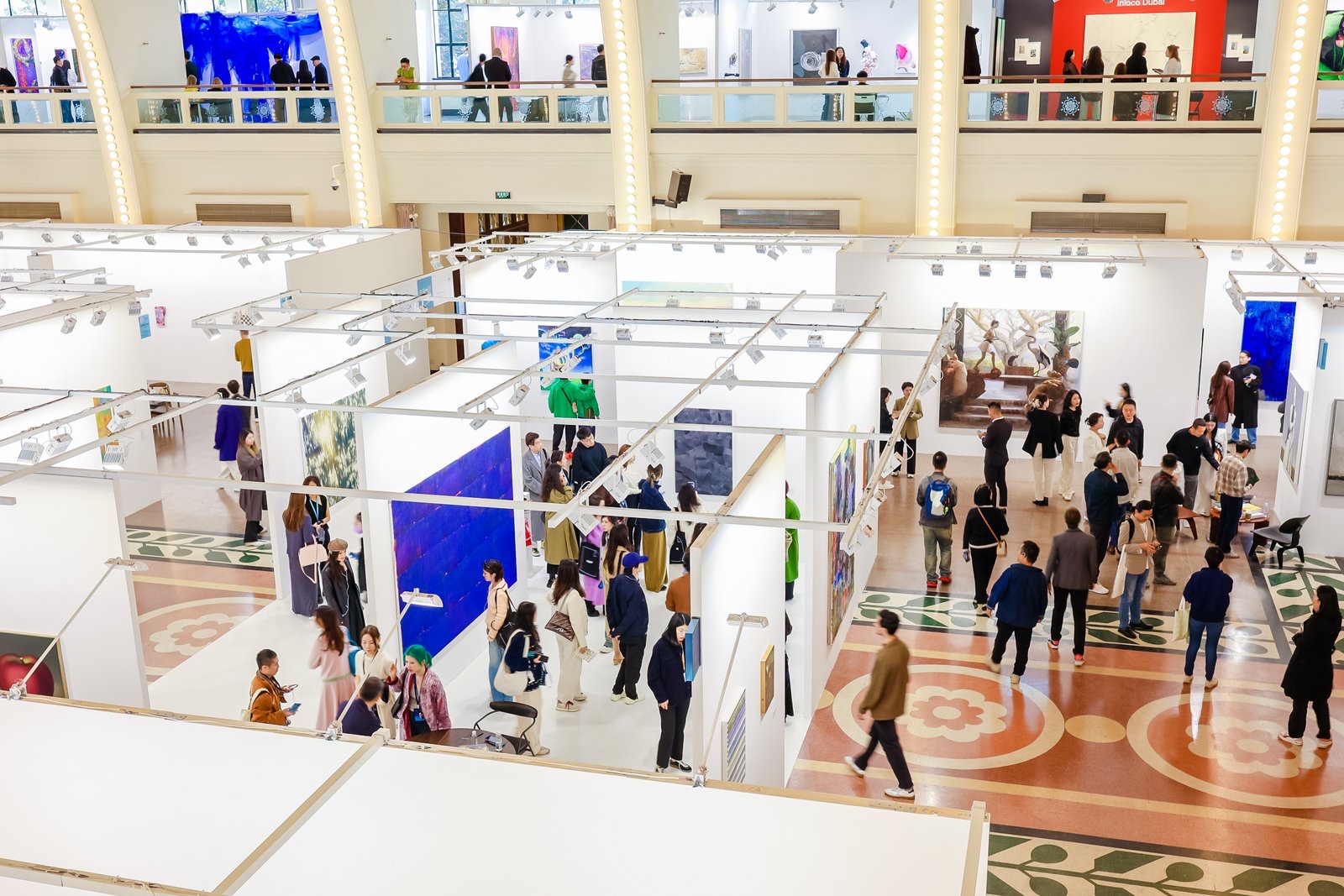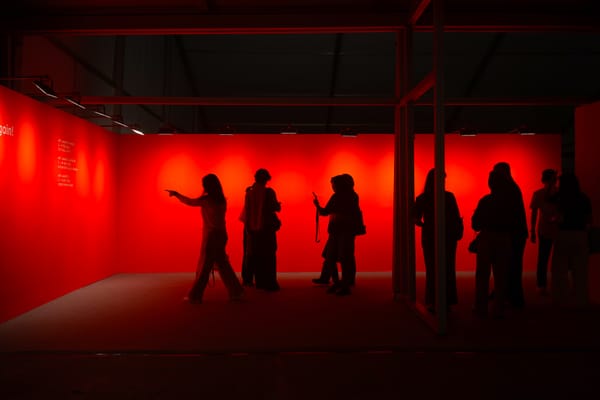Market
Shanghai’s Art Fairs: The End of the Blues?

As the duopoly of art fairs on China’s contemporary art calendar—West Bund Art & Design and Art021—wrapped up their 2024 editions, observers began to piece together what the numbers might indicate about China’s current art market. Buoyed by promising data from the recent Art Basel and UBS Survey of Global Collecting (where mainland Chinese collectors were reported to have the highest amount on art and antiques in the first half of 2024), this year’s events conjured an unexpected atmosphere that felt less like desperate optimism and more like genuine buzz. Unlike the city’s recent attempted Halloween celebrations, which fizzled out after a government crackdown, the vibrant art week momentarily lifted China’s art market from doom-scroll mode. Was this a temporary illusion or a genuine sign that the art world is finally starting to shed its pandemic-era blues?
For its 11th consecutive edition, West Bund Art & Design (Nov 7–10) expanded to five venues in Xuhui District, including West Bund Art Center (Hall A and Hall B), West Bund Dome, GATE M Dream Center, and ORBIT—stretching from the north to the south of Longteng Avenue, with more than 120 galleries from 23 countries and regions. The 12th edition of Art021 (Nov 7–10), meanwhile, occupied the palatial Shanghai Exhibition Centre, with 131 galleries from 20 countries and regions. At West Bund Art & Design, several curated sections were presented simultaneously, including “DREAM xiàn chǎng,” which mainly showcased outdoor public art, and “perspective,” a sector that highlighted new projects of local and global art institutions. For the main sector, the galleries were spread across Halls A and B of the West Bund Art Center, with Hall A hosting most of the blue-chip and established galleries, and Hall B focusing more on emerging and domestic galleries. In Hall A, Gagosian featured various international artists, including the pioneer of video art Nam June Paik’s Ambassador TV (2005), a sculpture of a vintage metal television covered in strokes of acrylic paint and oil marker; the Japanese artist Yayoi Kusama’s lilac-tinted painting INFINITY-NETS [LSCP] (2014) from her Infinity Nets series (1958– ); and Sunday (2024), a gold-plated stainless-steel panel riddled with bullet holes by Italian artist Maurizio Cattelan, who is known for his provocative sculptures and installations.
Works by a number of artists who were being featured in concurrent major exhibitions in the city were also included in the fairs. Across the aisle, at Pace Gallery, a sculpture by Chinese artist Yin Xiuzhen, Wall Instrument No. 28 (2019-21), made from porcelain and used clothing, sold for USD 110,000. Active since the early 1990s, Yin’s major solo exhibition had recently opened at Shanghai’s Power Station of Art. Next door, Lisson Gallery featured new and historic works across different media, including a gelatin silver print, Breathing In/Breathing Out (1977), by Marina Abramović that documented an early performance with the artist Ulay. Concurrently, Abramović is showing her first-ever institutional exhibition in China at Shanghai’s Modern Art Museum. Sadie Coles HQ’s booth showcased a group of sculptures by Chinese artist Nabuqi, who is featured in the ongoing “目 Chine: A new generation of artists” exhibition at the Centre Pompidou in Paris. Meanwhile, large-scale paintings by the German Neo-Expressionist Georg Baselitz were showcased by both Thaddaeus Ropac and White Cube. One of the more interesting presentations was Hauser & Wirth’s booth, which featured conceptual, blue-striped wall paintings by Turner Prize-winning artist Martin Creed that wrapped around all four walls of the booth.

Among the major sales was postwar painter Philip Guston’s Untitled (Red and Black Book) (1969), which sold for USD 1 million to a private collection in Asia, and a new large-scale painting Red Mangrove (2024) by Puerto Rican-born Angel Otero for USD 285,000, both at Hauser & Wirth on the VIP day of the fair. White Cube also boasted of selling a monochromatic abstraction by Korean master Lee Ufan for USD 1 million. Early sales and interests were also reported by other local and emerging galleries. For instance, Beijing-based Hive Contemporary reported selling several paintings by young Chinese artists such as Yuan Fang, Yingwei Pu, and Yaguan Guo. In Hall B, de Sarthe Gallery from Hong Kong sold a large oil-on-canvas work Two Users Play A Logic Game at 9 pm (2024) by Beijing-based artist Zhong Wei for around USD 30,000. Hong Kong’s Blindspot Gallery also received a positive response to its solo presentation of paintings by Chinese artist Zheng Haozhong. Overall, these transactions reaffirm painting’s enduring market dominance, with strong performances spanning both blue-chip galleries and their Chinese counterparts.

Meanwhile, Art021, held in the neoclassical Shanghai Exhibition Centre (formerly the Sino-Soviet Friendship Building), saw more modest sales despite its lower price points. A few bigger Chinese galleries juggled both West Bund and Art021. ShanghArt was one of them. At their booth, notable highlights included a large abstract painting by the late Chinese artist Yu Youhan, which sold for over USD 700,000. Veteran Art021 exhibitor David Zwirner presented a dreamlike landscape by Scott Kahn, who recently joined the gallery and will soon have a solo exhibition in the Hong Kong space, and two muted palette paintings by Luc Tuymans, whose survey exhibition opened this week at Beijing’s UCCA Center for Contemporary Art. Meanwhile, White Cube featured a dual presentation of Dutch-born Belgian artist Bram Bogart and Korean artist Lee Jin Woo, whose works explore the materiality and texture of painting. London-based Carlos/Ishikawa dedicated its booth to a solo presentation of Issy Wood, who is known for her realistic yet surreal paintings of enigmatic compositions. The artist is also currently having an exhibition at the private art space TANK Shanghai. In the "Detour" section, a curated program that spotlighted Asian and diasporic artists, Dubai-based gallery Lawrie Shabibi featured works by young artists from the Middle East and North Africa, including Pakistani artist Hamra Abbas and Malaysian-born British painter and performance artist Mandy El–Sayegh.
There’s no doubt that Shanghai art week delivered on atmosphere—large crowds, raucous parties, and a seemingly endless array of exhibitions. And evidently neither the recent Halloween fiasco nor the conservative turn on the American political scene dampened the enthusiasm of Chinese and international attendees. Yet, despite several high-profile sales, both fairs recorded more measured activities compared to their pre-pandemic peaks. So what does this all mean? Are we witnessing a new market reality in mainland China, one that mirrors the broader shift toward judicious, cautious, collecting? As the visitors left and the galleries packed up their booths, these questions lingered in Shanghai’s autumn air.
Louis Lu is associate editor at ArtAsiaPacific.







